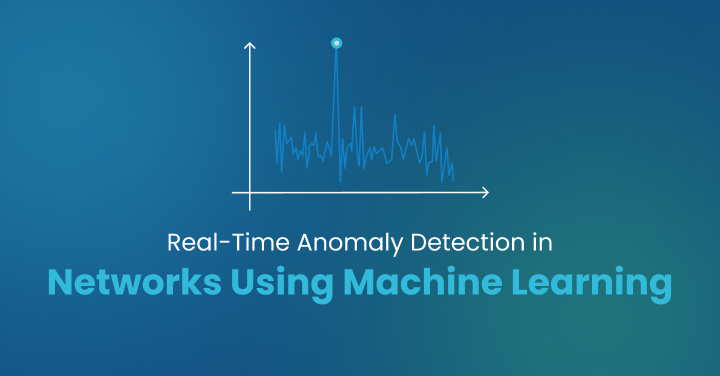Every organization today runs on data. From financial transactions and network traffic to system logs and customer interactions, every activity generates a continuous stream of information.
Within this massive flow, not all data behaves as expected. Sometimes, patterns shift, numbers spike, or activity drops suddenly. These irregularities might look small at first glance, but they can reveal critical insights about system issues, fraud attempts, or hidden inefficiencies.
That is where anomaly detection comes in. It helps identify unusual behaviors in data that could indicate a problem or an opportunity. Whether used in IT operations, finance, healthcare, or industrial systems, anomaly detection plays a vital role in spotting deviations early and ensuring smooth operations.
This guide explains what anomaly detection is, how it works, where it’s used, and why it’s becoming essential for data-driven businesses.
What is Anomaly Detection?
Anomaly detection is the process of finding patterns in data that do not match what is considered normal. These unexpected observations are called anomalies, outliers, or novelties. Detecting them is important because they can signal something significant, like a security breach, equipment failure, or incorrect data entry.
In simple terms, anomaly detection helps you answer one question: “Is this behavior normal?”
If the answer is no, the system marks that instance for further investigation. This approach is a core part of modern monitoring and predictive analytics systems.
Anomalies, Outliers, and Novelties: What’s the Difference?
Although they often overlap, each term has a slightly different meaning:
- Anomalies are observations that deviate from normal behavior and may indicate a potential issue.
- Outliers are extreme data points that fall outside the general pattern but are not always errors.
- Novelties represent new but valid behaviors not seen in the historical dataset.
Understanding these differences helps in choosing the right anomaly detection techniques for a specific situation.
The Goal of Anomaly Detection
The main goal of anomaly detection is to identify unexpected patterns that require attention. It helps organizations prevent failures, detect fraud, maintain security, and improve operational performance. Instead of reacting to problems after they occur, businesses can act proactively.
Applications Across Industries
Anomaly detection has applications in almost every industry that depends on data.
- IT Operations and Network Monitoring: Detects sudden spikes in traffic, downtime, or suspicious activities.
- Finance: Flags unusual transactions that may suggest fraud.
- Healthcare: Identifies irregular patient readings or lab results.
- Manufacturing: Finds unusual sensor values that could indicate equipment wear.
- Retail: Detects unusual buying patterns or pricing anomalies.
It serves as an early warning system that gives organizations time to investigate and respond before small issues turn into major problems.
How Does Anomaly Detection Work?
Anomaly detection follows a structured process that involves preparing data, building a model of normal behavior, scoring new data points, and continuously refining the system.
1. Data Preparation
Before a system can detect anomalies, it needs clean and structured data. The data preparation stage includes:
- Cleaning: Removing missing or duplicate values.
- Normalizing: Adjusting different scales so that all inputs are comparable.
- Feature Selection: Choosing the most important data points, such as CPU load, transaction time, or temperature readings.
- Segmentation: Grouping data based on users, devices, or systems to create more accurate models.
Without quality data, even the best algorithms can produce misleading results.
2. Modeling Normal Behavior
Once the data is ready, the next step is to teach the system what “normal” looks like. This involves analyzing historical data to understand typical patterns and trends.
There are several ways to model normal behavior:
- Statistical Models: Use mathematical methods like standard deviation or probability distributions.
- Machine Learning Models: Learn from labeled or unlabeled data using clustering or classification algorithms.
- Deep Learning Models: Neural networks such as autoencoders and LSTM are used for complex or time-series data.
The goal is to create a reference point. When new data arrives, the system can quickly decide if it behaves normally or unusually.
3. Scoring and Thresholds
After the model is built, it starts analyzing real-time data. Each new data point is given an anomaly score that measures how far it deviates from the expected range.
If the score crosses a certain threshold, the system flags it as an anomaly. These thresholds can be fixed or adaptive, depending on the use case.
For example:
- A CPU usage of 90% during backup hours may be normal.
- The same usage in off-hours could trigger an alert.
This approach ensures that alerts are meaningful and context-aware.
4. Continuous Improvement
Anomaly detection is not a one-time setup. As systems evolve and data changes, what was once normal may no longer apply. Regular evaluation and retraining help maintain accuracy and reduce false positives.
Metrics like precision, recall, and F1 score are used to measure how well the model performs and whether it needs adjustments.
Why Is Anomaly Detection Important?
Anomaly detection is a critical component of modern business operations. It improves system reliability, reduces risks, and helps organizations make smarter decisions.
1. Enhancing Security and Stability
Anomaly detection can identify suspicious activity before it becomes a serious security threat. For instance, an unusual login attempt or unexpected data transfer can alert teams to possible breaches. It also helps detect system instability by spotting irregular patterns that lead to downtime.
2. Early Warning and Predictive Maintenance
Anomalies often appear before a complete failure happens. Detecting them early allows organizations to take corrective action in time. This is particularly valuable in manufacturing or IT infrastructure, where downtime can be costly.
By using predictive analytics anomaly detection, businesses can plan maintenance schedules based on data, not guesswork.
3. Improving Data Quality
Anomalies are not always signs of problems; sometimes, they are simply incorrect data entries. Identifying these errors helps maintain clean datasets, which are essential for analytics, forecasting, and machine learning.
Types of Anomaly Detection
Anomalies come in different forms, depending on how and when they occur. Understanding the types helps choose the right approach for detection.
Examples of Anomaly Detection Systems
1. Financial Fraud Detection
Banks and payment providers rely heavily on anomaly detection systems to monitor real-time transactions. These systems can identify unusual purchase patterns or geographic inconsistencies that indicate fraud.
2. Network Intrusion Detection
In IT environments, network anomaly detection is crucial for identifying cyber threats. It analyzes network traffic and detects deviations in volume, speed, or connection patterns, helping prevent attacks before they spread.
3. Industrial Sensor Monitoring
Factories and power plants use anomaly detection to monitor IoT sensors. Sudden changes in pressure, temperature, or vibration levels can point to a potential fault, allowing maintenance teams to act before a breakdown occurs.
4. Healthcare Applications
In healthcare, anomaly detection helps identify irregular patient readings or medical errors. This not only ensures accurate diagnosis but also supports better patient outcomes through early detection of health risks.
Challenges in Anomaly Detection
While anomaly detection offers significant advantages, developing and maintaining an accurate system is not always straightforward. Real-world environments bring complexity, evolving data patterns, and the constant risk of false alarms.
Here are some of the most common challenges faced when implementing anomaly detection techniques and how they can be addressed.
1. Handling High-Dimensional Data
Modern IT systems generate data with hundreds or even thousands of variables — from application logs to network metrics.
In such high-dimensional data, separating genuine anomalies from random noise becomes increasingly difficult.
To overcome this, dimensionality reduction techniques like Principal Component Analysis (PCA) or autoencoders are often used to simplify datasets while retaining essential features. This helps the anomaly detection system stay focused on the most meaningful signals.
2. Adapting to Dynamic Environments
In dynamic systems such as cloud environments, “normal” behavior constantly changes. What’s normal today might be abnormal tomorrow. This makes it challenging for static models to stay relevant.
To address this, organizations should implement adaptive anomaly detection techniques that learn and update automatically as patterns evolve. Continuous model retraining and feedback loops ensure that the system remains accurate and responsive.
3. Dealing with Imbalanced Data
In most datasets, anomalies are rare compared to normal events. This imbalance can cause machine learning models to overlook anomalies entirely, as they get overshadowed by dominant normal patterns.
To improve data anomaly detection, techniques such as oversampling, synthetic data generation, or cost-sensitive learning can help balance the dataset. This ensures that the model pays equal attention to rare but critical anomaly events.
4. Managing False Positives and Alert Fatigue
If a model is too sensitive, it may generate too many alerts for normal variations. On the other hand, if it’s too lenient, real anomalies may go unnoticed.
High false-positive rates not only overwhelm teams but also reduce trust in the system. To combat this, it’s important to fine-tune thresholds, use context-aware scoring, and prioritize alerts based on severity.
Integrating network anomaly detection tools with automated workflows or AIOps platforms can further help in filtering noise and responding to true incidents faster.
Overcoming the Challenges
Each of these challenges can be addressed through a combination of good data practices, the right anomaly detection techniques, and ongoing model refinement.
A reliable anomaly detection system requires continuous learning, validation, and feedback. By designing adaptable models and keeping thresholds dynamic, organizations can achieve a balance between sensitivity and precision — reducing noise while maintaining high accuracy.
Ultimately, overcoming these challenges ensures that predictive analytics anomaly detection delivers consistent, actionable insights that support better performance, security, and business growth.
Best Practices for Implementing Anomaly Detection
Building a reliable anomaly detection system requires more than just selecting an algorithm. Success depends on how well the system is trained, tuned, and aligned with real-world data conditions.
Following proven anomaly detection techniques can help maintain accuracy, reduce false positives, and ensure that insights are both meaningful and actionable.
Here are some best practices to guide a robust implementation:
1. Select the Right Algorithm
The foundation of effective data anomaly detection lies in choosing the right model for your dataset and business context.
- Statistical models work well for structured, smaller datasets where relationships are predictable.
- Machine learning-based techniques like Isolation Forest or One-Class SVM are ideal for high-volume, complex data where patterns are constantly shifting.
- Deep learning models such as autoencoders or LSTM networks are best suited for sequential or time-series data, especially in network anomaly detection or IoT applications.
Selecting the right algorithm ensures that your system adapts accurately to evolving patterns while minimizing noise and irrelevant alerts.
2. Train, Test, and Tune Iteratively
Anomaly detection is not a one-time exercise. As data behavior changes, models must evolve too. Continuous training and validation allow your system to stay current and effective.
- Regularly feed updated data into your model.
- Validate the output against known anomalies.
- Adjust parameters to balance precision (catching true anomalies) and recall (avoiding missed detections).
For example, in predictive analytics anomaly detection, consistent retraining helps improve long-term reliability and minimizes false positives caused by changing data trends.
3. Focus on Features That Matter
Effective anomaly detection techniques depend heavily on good feature selection. The right variables help your model understand what truly defines “normal” system behavior.
- Focus on metrics that influence performance, such as CPU usage, latency, transaction volume, or sensor readings.
- Remove irrelevant or redundant data that can confuse the model.
- Use domain expertise to identify which parameters have the highest impact on your environment.
Whether in data anomaly detection for databases or network anomaly detection for cybersecurity, the quality of features often determines the success of your detection system.
4. Define Clear Alerting and Response Protocols
Detecting anomalies is only half the job; responding effectively is the other half. A well-defined alerting and escalation workflow ensures that detected anomalies lead to timely and appropriate actions.
- Set clear thresholds for alerts based on severity.
- Automate notifications for critical events while allowing manual review for lower-risk alerts.
- Integrate with ITSM tools or AIOps platforms for faster resolution.
By combining anomaly detection with automated workflows, teams can reduce response time and prevent alert fatigue. This is particularly important for network anomaly detection systems, where quick action can prevent potential security breaches or downtime.
Conclusion
Anomaly detection has become an essential part of modern data analytics and operations management. It allows businesses to identify irregular patterns, prevent failures, detect threats, and improve overall system reliability.
As data continues to grow in volume and complexity, manual monitoring is no longer enough. Automated anomaly detection systems powered by machine learning provide the intelligence needed to stay ahead of risks and make informed decisions.
When integrated with observability and predictive analytics platforms, anomaly detection does more than just find problems, it helps organizations build a smarter, safer, and more resilient digital environment.
If you’re unsure of how to go about it, get in touch with us.
FAQs:
They include statistical methods like z-score and IQR, machine learning algorithms such as Isolation Forest and One-Class SVM, and deep learning techniques like autoencoders or LSTM networks.
It monitors data streams and identifies events or behaviors that differ from established patterns, helping users detect issues automatically.
It is used in network anomaly detection, data anomaly detection, predictive analytics anomaly detection, financial fraud prevention, healthcare monitoring, and industrial maintenance.





